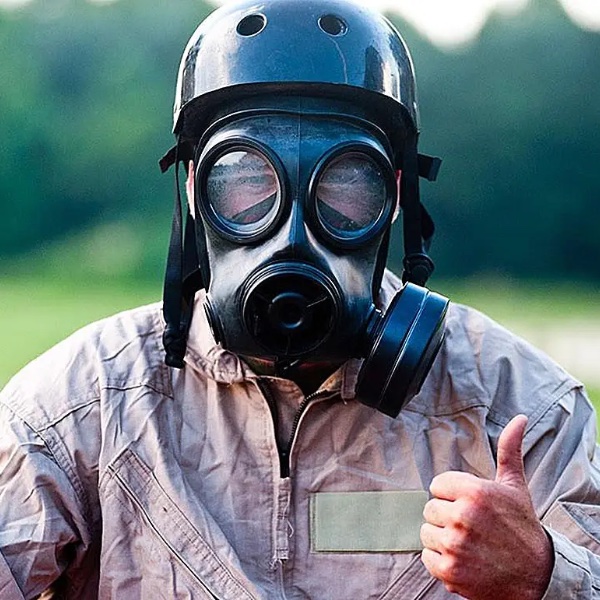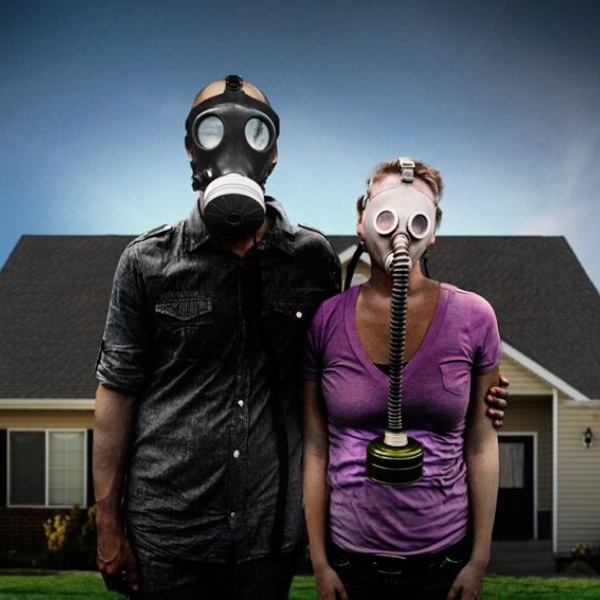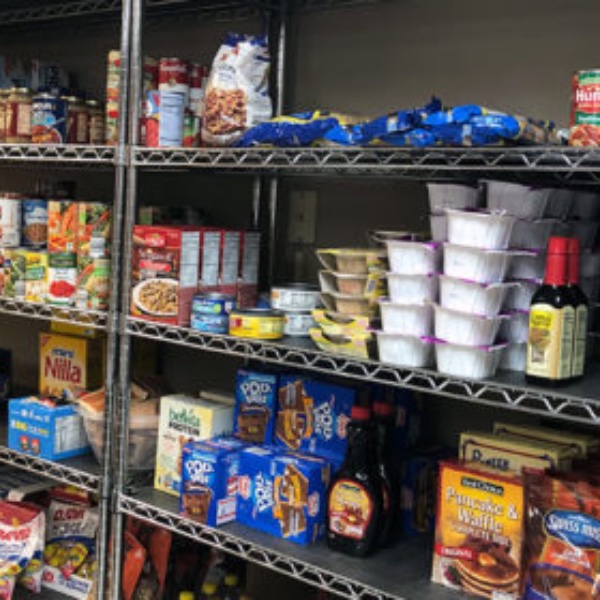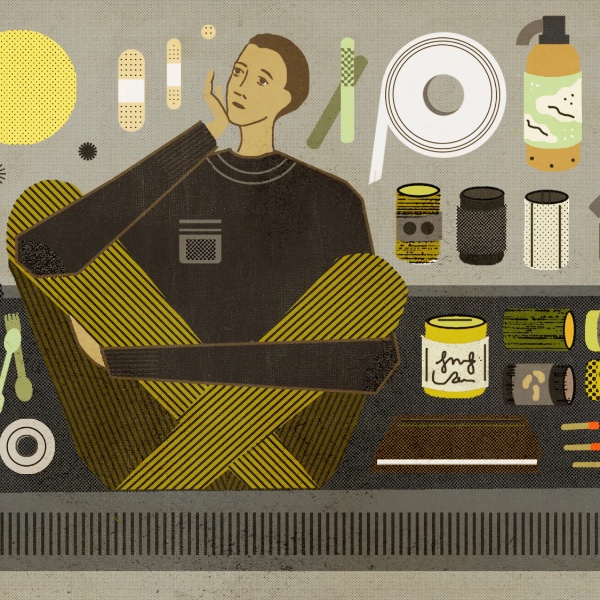Welcome to the world of prepping—a lifestyle that embraces readiness and resilience in the face of the unpredictable. In today’s turbulent times, being prepared isn’t just a choice; it’s a necessity. Think of it as your insurance policy against life’s curveballs. This article serves as your compass, guiding you through the uncharted territory of emergency preparedness.
Prepping for Beginners: A Comprehensive Guide to Emergency Preparedness

Imagine a life where you’re equipped with the knowledge and resources to face the unexpected head-on. Whether it’s a natural disaster, a power outage, or unforeseen economic challenges, prepping empowers you to stand firm when others might falter. It’s more than just a practice; it’s a way of life that breeds confidence and peace of mind.
But here’s the catch—it all starts with the first step. As a beginner in the world of prepping, you’re embarking on a journey toward self-reliance and security. This comprehensive guide is your trusted companion on this path. It’s here to demystify the intricacies of emergency preparedness and provide you with the essential insights you need.
So, fasten your seatbelt and prepare for an adventure. We’ll explore the basics of prepping, from understanding the broader perspective to tailoring your preparedness to your location. We’ll delve into the necessities like food, water, first aid, and even the often-overlooked aspects of prescription medications and personal hygiene.
But prepping isn’t just about stocking up supplies; it’s also about building a community of like-minded individuals who share your commitment to preparedness. We’ll guide you through the process of networking with fellow preppers and tapping into valuable online resources.
And remember, prepping is a journey, not a destination. It’s about ongoing learning, adaptability, and being ready for whatever comes your way. So, let’s embark on this adventure together, and by the end of this guide, you’ll be well on your way to becoming a seasoned prepper—confident, prepared, and ready for anything life throws at you.
Lets waste no more time and dive straight into the basics of emergency preparedness.
Understanding the Basics of Prepping

Emergency preparedness andPrepping isn’t just about hoarding cans of beans and bottled water; it’s a profound shift in perspective and lifestyle. It’s about realizing that we live in a world where unpredictability is the only constant. When disaster strikes, most people panic, caught off-guard by the unexpected. But as a prepper, you’re not most people. You’re part of a community that thrives on proactive preparation, ensuring you stay calm and composed when adversity rears its head.
Imagine a scenario where your power goes out, your local grocery store shelves are empty, and emergency services are stretched thin. Panic ensues. But not for you. You’re prepared. You’ve got food, water, and essential supplies tucked away. You know how to purify water and create makeshift shelter. In times of chaos, you remain a pillar of stability for your family and community.
Prepping is not driven by fear; it’s fueled by foresight. It’s a mindset that embraces the reality that challenges will come, but with preparation, they can be met with confidence. When you adopt this perspective, you’re no longer a passive victim of circumstance; you’re an empowered survivor, ready to tackle whatever life throws your way.
So, as you delve deeper into the world of prepping, remember that it’s not just about stockpiling goods; it’s about cultivating a mindset of preparedness. It’s about recognizing that the unexpected is not a question of “if” but “when.” And when that moment arrives, you’ll be the calm amidst the storm, a true prepper who understands the value of being ready.
Building a Solid Foundation

The cornerstone of prepping and emergency preparedness is establishing a strong foundation. This includes understanding the various types of emergencies one might encounter. Preparedness encompasses a range of scenarios, from natural disasters like earthquakes and hurricanes to man-made crises such as power outages and economic downturns.
Tailoring Prepping to Your Location
When it comes to prepping and emergency preparedness, location matters—a lot. Your geographical coordinates can significantly influence the types of disasters you’re most likely to encounter. Understanding your local risks is like having a secret weapon in your preparedness arsenal.
Imagine you live on the picturesque west coast, where rugged mountains meet the ocean. While the scenery is breathtaking, it also comes with a unique set of challenges. Wildfires are a recurring threat here, and every year, communities face the possibility of these destructive blazes. If you call this region home, wildfire preparedness is a top priority. You’ll need to learn about fire-resistant landscaping, evacuation routes, and keeping essential documents ready to go.
On the other hand, picture life along the serene coast, where balmy breezes and sandy shores beckon. But living in a coastal state means you must be on guard for another formidable opponent: hurricanes. These massive storms can wreak havoc with their powerful winds and storm surges. Coastal residents need to prioritize hurricane readiness, which includes securing homes, stocking up on supplies, and having a well-thought-out evacuation plan.
The point is, prepping isn’t one-size-fits-all. It’s about adapting your preparations to your unique environment. If you’re inland, you might focus on tornado preparedness. If you’re in a region prone to earthquakes, understanding structural integrity and having emergency kits at the ready is crucial.
By tailoring your prepping efforts to your location, you become better equipped to face the specific challenges your region presents. You’ll know the enemy you’re up against, and that knowledge is power. So, wherever you call home, remember that being prepared starts with understanding the risks that come with your address. It’s about adapting to your environment and ensuring you’re ready for whatever nature throws your way.
Food Preparation for Survival

In the realm of prepping, one element takes center stage: food. It’s not just about sustenance; it’s about survival. An adequate emergency food supply can make all the difference when disaster strikes. But remember, not all survivalists are created equal. Caloric needs can vary significantly based on factors like age, sex, activity level, and body type. That’s why crafting a well-thought-out food storage plan is crucial for long-term survival.
Think of your food supply as your lifeline—a source of nourishment and comfort in times of crisis. It’s more than just a stockpile of canned goods; it’s a strategic reserve that ensures you and your loved ones have the energy to endure and thrive.
Consider the diverse dietary needs within your household. Growing teenagers require more calories than sedentary adults, and nursing mothers have unique nutritional requirements. A comprehensive food storage plan takes these factors into account, ensuring that everyone’s needs are met.
Furthermore, variety is key. A diet solely comprised of one type of food can lead to nutritional deficiencies. So, diversify your food storage with a mix of canned goods, dry grains, freeze-dried fruits and vegetables, and long-lasting staples like rice and pasta. Don’t forget to include essential cooking and food preparation tools in your kit.
But prepping isn’t just about amassing mountains of food; it’s about sustainable food practices. Learn how to grow your own produce, even if it’s just a small garden or potted herbs. Acquire skills in food preservation techniques like canning and drying. When you’re self-reliant in your food supply, you’re less vulnerable to disruptions in the distribution chain.
In essence, food preparation for survival is an art and a science. It’s about striking a balance between calorie intake and nutritional variety. It’s about considering the unique needs of your household and adapting to those needs. It’s about being ready not just for the short term, but for the long haul. So, as you embark on your prepping journey, remember that food isn’t just sustenance; it’s the cornerstone of your resilience and readiness.
Water: The Essential Prepping Component

In the world of prepping, water is the unsung hero—a silent but indispensable partner to food. Adequate water storage isn’t just a good idea; it’s a fundamental aspect of emergency preparedness. It’s the elixir of life, and understanding how to procure, purify, and store water is nothing short of essential.
Imagine a scenario where your usual water supply is compromised. Perhaps a natural disaster has disrupted your city’s water infrastructure, or you find yourself in a remote location with no access to clean water sources. In such moments, your preparedness hinges on your ability to secure safe drinking water.
Procurement: The first step in water prepping is understanding how to procure it. You might need to collect rainwater using barrels or tarps, or you might locate nearby natural water sources like rivers or streams. However, it’s crucial to remember that not all water sources are safe to drink, so you’ll need to have the means to purify it.
Purification: Purifying water is an art form in prepping. You might use water purification tablets, filters, or even construct a simple solar still. Knowing how to remove impurities, bacteria, and viruses from water is a vital skill that can mean the difference between health and illness during a crisis.
Storage: Adequate water storage is non-negotiable. Consider large containers that can hold a substantial amount of water. These could be barrels or even specially designed water storage tanks. Don’t forget to rotate your water supply periodically to ensure its freshness.
When it comes to water, the rule of thumb is simple: never underestimate its importance. You can survive without food for weeks, but only days without water. So, as you embark on your prepping journey, understand that water isn’t just a commodity; it’s a lifeline. It’s the element that keeps you hydrated, sustains your hygiene, and bolsters your resilience in the face of adversity. It’s your silent partner in prepping, ready to quench your thirst and keep you going, no matter what challenges lie ahead.
First Aid and Medical Prepping
In the world of prepping, a well-stocked first aid kit isn’t just an accessory; it’s a lifeline. When disaster strikes, medical assistance might not be readily available, making self-reliance in managing injuries a critical skill.
Imagine a scenario where you or a loved one sustains a minor injury during a crisis. It might be a cut, a burn, or a sprain—common occurrences even in the best of times. But in the midst of chaos, having the right tools and knowledge at your disposal can be the difference between a quick recovery and a worsening condition.
First Aid Supplies: Your first aid kit should be a comprehensive one, containing essentials like bandages, antiseptic wipes, adhesive tape, scissors, tweezers, and sterile gauze. It should also include over-the-counter medications for common ailments like pain, fever, and allergies. Don’t forget to tailor your kit to the specific needs of your family members, including any prescription medications they require.
Training: Having the supplies is one part of the equation; knowing how to use them is equally crucial. Consider taking a basic first aid course to familiarize yourself with essential life-saving techniques. Understanding how to properly dress a wound, perform CPR, or immobilize a fracture can make all the difference in an emergency.
Long-Term Health: Beyond immediate injuries, preppers should also think about long-term health. This includes considering chronic medical conditions that may require ongoing treatment, such as diabetes or hypertension. Having a plan and extra supplies for managing these conditions is essential.
In essence, first aid and medical prepping is about self-reliance and preparedness. It’s about being the first responder in times of crisis, equipped with the knowledge and tools to handle medical emergencies. It’s about recognizing that injuries and health concerns don’t take a break just because the world around you is in chaos. So, as you delve into the world of prepping, remember that your first aid kit is more than a collection of supplies; it’s a symbol of your commitment to keeping yourself and your loved ones safe and healthy, no matter the circumstances.
Prescription Medications and Personal Hygiene
In the intricate tapestry of prepping, there are two threads that weave seamlessly into the fabric of preparedness: prescription medications and personal hygiene. These seemingly distinct aspects share a common goal—they contribute to your overall well-being during crises.
Prescription Medications: For individuals who rely on prescription medications to manage chronic conditions, prepping takes on an additional layer of complexity. It involves ensuring a sufficient supply of these crucial drugs to weather any disruption in the healthcare system. This may mean working closely with your healthcare provider to secure extended prescriptions or exploring avenues for stockpiling essential medications. Remember, in times of crisis, access to pharmacies and medical care can become unpredictable, making self-sufficiency in managing your health paramount.
Personal Hygiene: On the surface, personal hygiene items may seem trivial in comparison to food and water. However, they play a pivotal role in maintaining both physical and mental well-being during challenging times. Think about the simple act of washing your hands; it’s a powerful defense against illness. Include items like soap, toothpaste, toilet paper, and feminine hygiene products in your prepping supplies. These seemingly basic items can significantly contribute to your comfort and overall health.
Building a Prepping Community
Prepping need not be a solitary endeavor. In fact, there’s great strength in numbers. Networking with like-minded preppers can provide valuable insights, support, and a sense of community in the face of uncertainty.
Consider joining or forming a prepping group in your local area. Collaborative efforts can lead to resource-sharing, skill-building, and collective problem-solving. In such groups, individuals bring their unique skills and knowledge to the table, creating a diverse pool of expertise that benefits everyone involved.
For those who prefer online interactions, there is a wealth of resources and communities tailored specifically to beginners in the world of prepping. Websites, forums, and social media groups provide platforms to connect with experienced preppers, ask questions, and access a treasure trove of information.
In essence, building a prepping community is about recognizing that we are stronger together. It’s about forging connections with people who share your values and vision for preparedness. It’s about pooling your collective wisdom and resources to enhance your resilience in the face of adversity. So, as you embark on your prepping journey, consider the power of community—it might just be the missing piece that ensures your readiness for the unknown.
The Journey of Prepping
The path of prepping is not a one-time sprint; it’s a marathon, a continuous journey. As you embark on this adventure, it’s important to understand that preparedness is not a fixed state but a dynamic process. Being prepared for specific events, such as floods, hurricanes, or tornadoes, requires ongoing effort and a readiness to adapt to changing circumstances.
Think of it this way: as you learn, grow, and accumulate knowledge and supplies, you’re enhancing your ability to face an array of potential challenges. You’re not merely stockpiling goods; you’re building resilience, honing skills, and cultivating a mindset that can weather the storm, whatever form it takes.
Consider the seasons changing or the landscape of your life evolving—your preparedness strategy should adjust accordingly. It’s about staying agile, open to new information, and responsive to emerging threats. Just as you periodically check your supplies and rotate your food, you should also reassess your plans and update your skills.
Conclusion
In conclusion, emergency preparedness and prepping for beginners is an essential and empowering step toward ensuring personal and family safety in an unpredictable world. This comprehensive guide has illuminated the fundamentals of emergency preparedness, from the importance of food and water storage to the significance of medical supplies and community building.
As you embark on your prepping journey, always remember that preparedness is not just a destination; it’s a way of life. It’s a mindset that fosters self-reliance, adaptability, and resilience. It’s a commitment to staying informed, staying prepared, and above all, staying safe.
The road ahead may have its twists and turns, but armed with knowledge, skills, and a prepper’s spirit, you’re better equipped to navigate whatever challenges come your way. So, embrace the journey, build your readiness, and find strength in the peace of mind that comes from knowing you’re prepared for the unknown.
Take a look at more prepper articles here.
